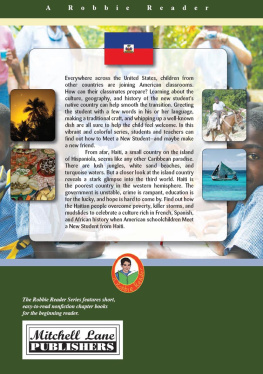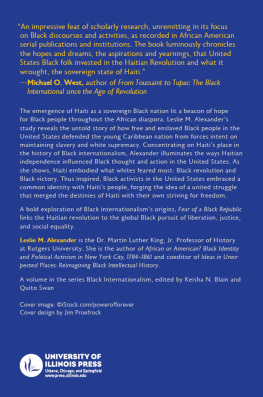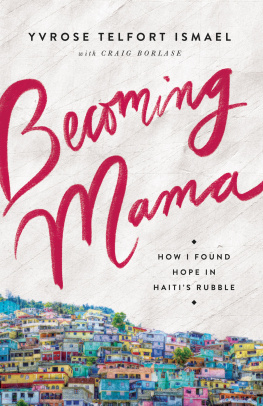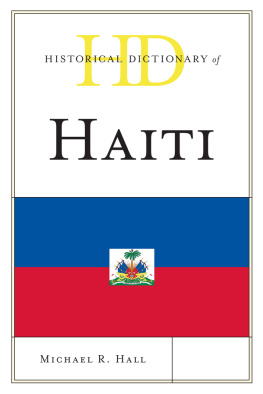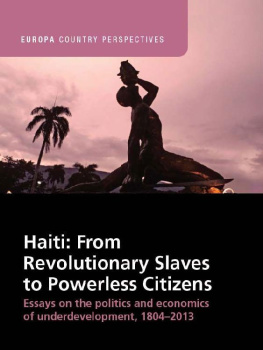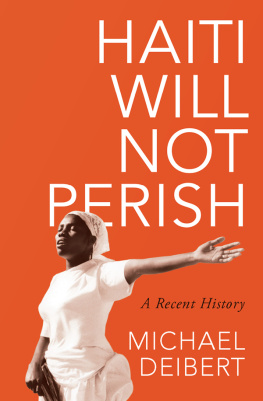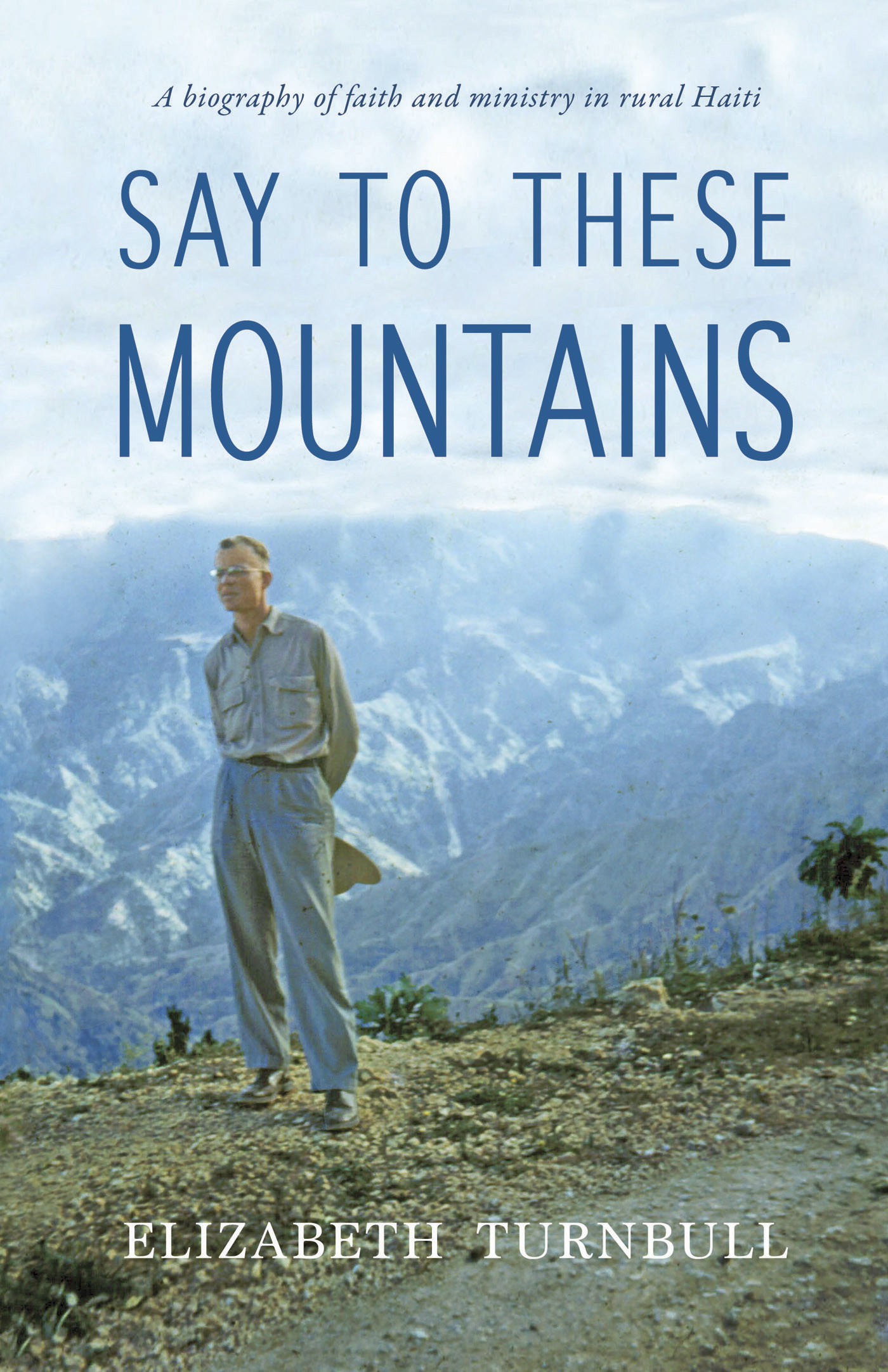Title Page
SAY TO THESE
MOUNTAINS
A biography of faith and
ministry in rural Haiti
elizabeth turnbull

Durham, NC
Copyright
Copyright 2017, by Elizabeth Turnbull
Say to These Mountains: A biography of faith
and ministry in rural Haiti
Elizabeth Turnbull
lightmessages.com/elizabeth-turnbull
elizabeth@lightmessages.com
First Edition
Published 2017, by Light Messages Publishing
lightmessages.com
Durham, NC 27713 USA
SAN: 920-9298
Paperback ISBN: 978-1-61153-229-6
E-book ISBN: 978-1-61153-228-9
Library of Congress Control Number: 2017901017
ALL RIGHTS RESERVED
No part of this publication may be reproduced, stored in a retrieval system, or transmitted in any form or by any means, electronic, mechanical, photocopying, recording, scanning, or otherwise, except as permitted under Section 107 or 108 of the 1976 International Copyright Act, without the prior written permission except in brief quotations embodied in critical articles and reviews.
All Scripture quotations are taken from the Holy Bible, New International Version. The epigraph is taken from the Holy Bible, New Living Translation.
Dedication
To the people of Haiti, and especially to her Church.
How beautiful on the mountains are the feet of the messenger who brings good news, the good news of peace
and salvation, the news that the God of Israel reigns!
Isaiah 52:7
Preface
Preface
When my grandfather asked me to write his biography, I initially said yes. Then no. I was too close, I argued. There was no way I could be impartial. Others heard my objections and dismissed them. I didnt need to be objective, they said. After all, my grandfathers story was, in a way, my story, too. Still, I remained unconvinced. For over a decade, I put off the project.
Then I finally read Lyndon Johnson and the American Dream by Doris Kearns Goodwin. I was struck by how Goodwin inserts herself into the narrative, sharing intimate exchanges shed had with Johnson, giving her readers a rare glimpse into the mind and heart of a former president. She wasnt absent from the narrative at alland the book was stronger for it. I found inspiration in her approach.
Then there was this realization: For years I had watched people write about their work in Haitipeople who had come later and built on the foundation laid by my grandparents. And yet, Wallaces story remained untold. It needed to be written. So I started writing.
While a biographer would ordinarily take years to research a project covering nearly a century of living, I was able to start and complete the book in under two years. This is not a testament to my writing speed but rather to Wallaces extraordinary skills as an archivist. He spent years sorting through his files, meticulously organizing digital and physical documents by date. He also typed up his notes and journals into an informal volume for his familyjust in case I didnt get to the project in time. For the biography, I primarily used these notes, as well as interviews with Wallace and Eleanor.
In addition to Wallaces archives, I have relied upon documents from newspapers, websites, and government records to help me fill in the blanks and to corroborate events. Where Wallace is quoted directly, I have endeavored to remain faithful to his own words, editing only with his permission for syntax and grammar.
From time to time, my voice is heard directly in the narrativeto lend clarity, to offer insight, to share what perhaps only a granddaughter might see. I hope this helps the reader get to know Wallace the man, not just Wallace the missionary.
Say to These Mountains is, at its core, the biography of Wallace Turnbull, my grandfather. But it is more than that. It is, by necessity, my grandmother Eleanors story, too. For as Wallace himself says time and again, there is no me without her. This book is also a piece of Haitis story, of her Church, her people, her historyfor there is no Wallace without them. Finally, this book is in part my story, for I see now there is no me without Wallace.
The Beginning and an End
one
The Beginning and an End
The wooden saddle hit Wallaces lower back with each step as the mule inched its way down the steep path. Fatigue from the two-day journey had begun to set infor man and beastbut still they plodded on, the patchwork of the mountains draped around them like a warm blanket, the sun dripping onto their shoulders and rolling down their spines. The same sun had branded Wallaces once fair skin: his ears carved away layer by layer under the doctors scalpel; the ever-increasing brown spots on his now wrinkled hands; the leathery patch at the back of his once-smooth neck. At 90 years old, Wallace recognized he was nearing the end of his life, but as he rode down from the church dedication in Portino, he also knew that his life had begun on the mission field and, if God granted, would end there as well.
Wallaces father, John Turnbull, had traveled to India in 1917 to serve as a missionary. He was 29 years old and the third Turnbull to be assigned by the Christian and Missionary Alliance (CMA) to the province of Gujarat in western India; he followed his brothers Walter and Louis, who had arrived in India at the turn of the Twentieth Century in the middle of a devastating famine.
When John arrived, he found a rapidly changing India: the Indian National Congress led by Mahatma Gandhi had called for the self-government of India. The British were fighting wars on multiple fronts as the First World War threatened to topple the empire. Tensions were rising on all sides. Though he never expressed it in such a way, John may very well have found himself in a no-mans-land. Having been born and raised in Peterborough, Canada, he was a British citizen, but as a missionary, his role was to be a friend and equal to the Indians he served. To straddle the ever-higher wall of division, he would have to be three men in one: Citizen of King and Country, Friend to India, Faithful Servant of Christ.
From the very beginning of his ministry, John wanted to raise up local leaders in the Church instead of having new believers constantly relying on foreign missionariesa passion that would be handed from father to son. So John began teaching promising young men about the Bible, the tenets of Christian faith, and how to be leaders in their churches and communities. Recognizing that even spiritual leaders have physical needs, John sold his shirts from time to time to buy rice to feed his students.
As a bachelor, John threw himself into his service, finding adventure around every corner. The greatest of his adventures were those that led him north to the ancient kingdom of Rajputanaknown today as Rajasthan after the Constitution of 1949. Despite warnings from his brother Louis that it was too dangerous, John persisted in his trips. He was the first missionary to preach in Rajputana. To some, this might seem daring or brave, to others it might seem foolish. But for John, it was a divine calling: he had come to India to preach, and too many of the people of Rajputana had never heard the gospel. This was his duty.
John argued that the Lord would keep him safe from danger. He also likely took a measure of comfort in his red beard, which earned him respect from Hindus as a holy man of sorts. But even holy men werent exempt from all the perils of an India in turmoil.


